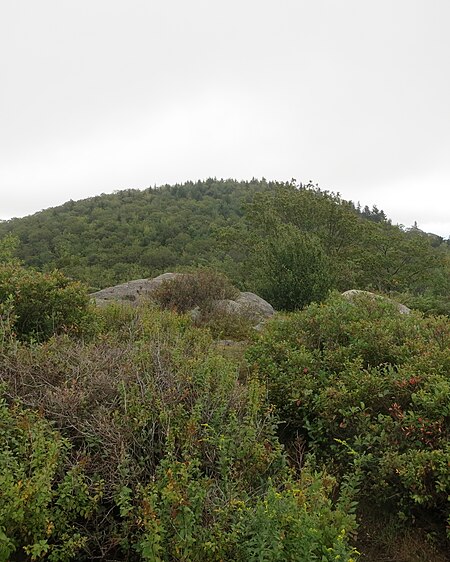Gap Mountain

Gap Mountain, located in Troy, New Hampshire, United States, is a small monadnock with three summits ranging between 1,820 feet (555 m) and 1,900 feet (579 m) above sea level. The lower north and middle summits are mostly bald and offer panoramic views of the surrounding rural landscape and of the higher and more popular Mount Monadnock. The Metacomet-Monadnock Trail passes over the north and middle peaks. The higher southern summit is wooded with no views. The mountain, located entirely within the Gap Mountain Reservation managed by the Society for the Protection of New Hampshire Forests, is named for the cleft separating the south peak from the north and middle summits. The mountain is flanked by Mount Monadnock 3 miles (5 km) to the north and Little Monadnock Mountain 4 miles (6 km) to the southwest; the mountain's slopes drain to the east and south into the Millers River, thence into the Connecticut River to Long Island Sound. To the north and west, the slopes drain into the Ashuelot River, thence to the Connecticut River.
Excerpt from the Wikipedia article Gap Mountain (License: CC BY-SA 3.0, Authors, Images).Gap Mountain
Quarry Road,
Geographical coordinates (GPS) Address Nearby Places Show on map
Geographical coordinates (GPS)
| Latitude | Longitude |
|---|---|
| N 42.818888888889 ° | E -72.137777777778 ° |
Address
Gap Mountain Reservation
Quarry Road
03465
New Hampshire, United States
Open on Google Maps








